What are our ethical obligations to other people? Whom do we trust? What are the limits of that trust? What are the precautions we must take to protect ourselves, our loved ones, and people we’ll never meet?
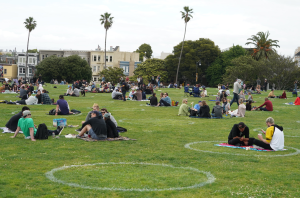 Social distancing circles at Mission Dolores Park in San Francisco.
© Lynn Friedman / CC BY-NC-ND 2.0
Social distancing circles at Mission Dolores Park in San Francisco.
© Lynn Friedman / CC BY-NC-ND 2.0
These are the questions that people around the world are asking themselves in an effort to slow the spread of COVID-19, the disease caused by infection with the novel coronavirus known as SARS-CoV-2.
Initially, governments asked us to shelter in place. That meant staying inside our homes for weeks and months, depending on local conditions. Even after we were permitted to leave our houses, we have needed to maintain distance and barriers between each other—perhaps indefinitely. Fighting COVID-19 has cut people off from friends, lovers, family, neighbors, and coworkers. Kids can’t go to school; families can’t go to church; we can’t see music or sports together.
This has made life lonely and difficult—and that’s taking a toll on our well-being. The recently published COVID Response Tracking Study from the University of Chicago finds that just 14 percent of American adults say they’re very happy, down from 31 percent before the pandemic. The number of those who report feeling lonely has doubled. The number of Americans experiencing serious psychological distress has tripled. Many of us are struggling to get basic, practical needs met.
That’s not sustainable. We don’t believe that it’s realistic or desirable for a majority of people to sit alone in their homes for the next two or more years until a vaccine is developed. Humans need physical connection; everyone needs a hug sometimes, and for most adults, sexual desire is part of being alive and healthy. Working parents need to cooperate with others for child care. The children themselves need social interaction in order to develop as healthy human beings. Elders need care and companionship.
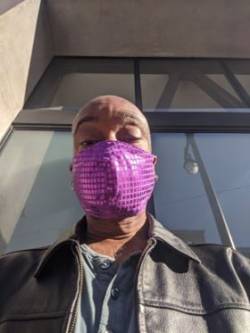 "I and a small group, including several single folks, were trying to create a pod. But after initial conversations, it felt too hard given that there were just a ton of complications, such as working in others' homes, elderly parents, roommates, etc. The vectors out and in were too overwhelming to figure out. So we've taken to socially distant hangouts instead with smaller groupings of us." — Matthew Florence, San Francisco, CA
"I and a small group, including several single folks, were trying to create a pod. But after initial conversations, it felt too hard given that there were just a ton of complications, such as working in others' homes, elderly parents, roommates, etc. The vectors out and in were too overwhelming to figure out. So we've taken to socially distant hangouts instead with smaller groupings of us." — Matthew Florence, San Francisco, CA
That’s why many public health experts have recommended “quarantine pods” as an effective way to get our social, emotional, familial, and sexual needs met without unnecessarily endangering ourselves or others. Pods are small, self-contained networks of people who limit their non-distanced social interaction to one another—in other words, they’re the small group of people with whom you share air without using breath-control precautions such as masks.
Pods (or “bubbles” or “containers” or “quaranteams”) aren’t just ways for people to have social connection within a pandemic. They also serve an important epidemiological purpose—they help limit the size and spread of outbreaks. That’s one reason why in the Bay Area, where the authors live, public health officials recommend that pods be no larger than 12 people who live across three households, and that pods limit their non-distanced social contact to one another for at least three weeks.
Of course, pods are not the only helpful or acceptable risk management strategy. People can also rely on tools such as testing; solo quarantining; seeing different partners, family, or friends in two-week intervals (to take into account the top of the range of COVID’s incubation period); and more. We’re focusing on pods here because we believe they can provide stable configurations for social connection across a range of needs and circumstances that, done well, best reflect public health officials’ concerns.
But while pods seem like a simple concept, they can be complicated in real life. As they become more common, we’d like to suggest some questions to ask and address as you form your own in the context of COVID-19. At the very least, we hope our suggestions give you some food for thought as you consider expanding your child care network, sexual activity, or social scene.
What are the needs of your pod? Why are you forming one?
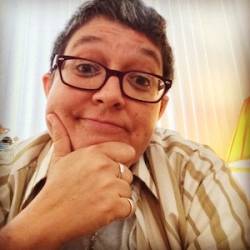 "My daughter's boyfriend’s family is the other family in our 'quarantine pod.' They are a family of four. It has helped all of our mental health to have another family with whom to socialize. They are extremely cautious though, so we have had to adjust our less cautious approach to more align with theirs." — Susannah Bell, Berkeley, CA
"My daughter's boyfriend’s family is the other family in our 'quarantine pod.' They are a family of four. It has helped all of our mental health to have another family with whom to socialize. They are extremely cautious though, so we have had to adjust our less cautious approach to more align with theirs." — Susannah Bell, Berkeley, CA
People have different needs—and different reasons for expanding their circle of pandemic-time connection.
Start by asking yourself: “What are my primary needs?” If you are single and stranded by quarantine in your apartment, then you might want to choose one good friend to join you for meals and drinks. You might need a sexual or emotional partner of some kind. If you’re disabled, you might need all that, plus friends to help get groceries, cook, and clean. Or perhaps you have an older parent to care for, who needs care from others. If you have children, you’ll need to negotiate with another family for child care and companionship.
We all face different circumstances; we all have different needs. Our pods will work best when they have a sense of purpose that involves meeting the needs of all their members. The first step in finding a purpose is being honest with yourself—and being honest with prospective pod members. This means being vulnerable. If you don’t feel able to be vulnerable with another person, they might not be the best pod member.
Take emotional and physical intimacy, for example. For many of us, who we are sexually is at the core of who we are in the world. Our sexual expression, and the joy, struggle, and growth that comes along with it, can support our emotional, spiritual, and physical resilience during hard times.
Despite the centrality of sex to our lives, many of us are ashamed of having sexual needs. This is tragic, because we should be no more ashamed of needing sexual contact than we should be of needing food. So, be honest with yourself and others: If you want to form a pod to meet sexual needs, say so, rather than concealing or minimizing that purpose.
You may have children whose developmental needs take precedence over adult ones. If that’s your situation, you’re almost certainly not alone in wanting a pod for your children, so that they have friends and so that you can work—or simply be alone once in a while. There is no shame in wanting me-time, either. We might love our kids, but we also need to take breaks from them. In fact, we need breaks from everyone we’ve been quarantined with. If getting those breaks is part of the purpose of your pod, say so.
From this clarity of purpose will come a sense of mission that will shape the day-to-day decisions of everyone in the pod.
Does everyone in the pod know the risks?
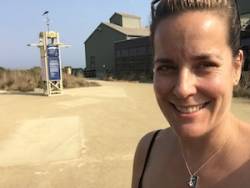 "I live in a group house so our bubble is bigger than most folks'. We include residents, lovers, lovers' housemates, and lovers' lovers. We don't social distance with those folks, and we do outside visits with everyone else. Our total bubble is about 15 people, give or take, though it changes." — Jen Angel, Oakland, CA
"I live in a group house so our bubble is bigger than most folks'. We include residents, lovers, lovers' housemates, and lovers' lovers. We don't social distance with those folks, and we do outside visits with everyone else. Our total bubble is about 15 people, give or take, though it changes." — Jen Angel, Oakland, CA
In order to manage risk, you must first have a pretty clear understanding of what the risks are.
COVID-19 doesn’t spread through simple physical contact—it spreads through the droplets of saliva, mucus, and water vapor we emit just by breathing. Scientists still don’t know precisely how many viral particles it takes to infect a person, but one thing seems clear: The longer you are exposed to infected droplets, the more likely you are to cross the threshold into a full-blown COVID-19 infection. To make matters even more complicated, the “facts” of coronavirus are constantly evolving, as doctors and scientists learn more about it.
That’s why it is essential for everyone in the pod to share and acknowledge up-to-date medical information. Incompatible beliefs or uneven knowledge—about, for example, the effectiveness of masks—will make sustaining the pod impossible. In forming your own pod, make sure that everyone understands the risks and how to mitigate them. Not just the risks, but also the symptoms—because recognizing symptoms as soon as possible is key to protecting others.
No doubt, this information is grim and dark and just no fun at all! There’s a lot to keep up with, and that can be taxing. Being part of a pod can help, because then you have a gang who can help you find, interpret, and apply new information about COVID-19 as it’s uncovered.
If you want to move about society ethically, then familiarity with the science is imperative, because understanding how the disease spreads is an important step toward assessing your own risk profile (i.e., what risks you expose other people to) as well as your risk tolerance (i.e., what risks you’re willing to accept). Part of the purpose of any responsible pod should be to share new information and come to some agreement as to how it affects the decisions of pod members.
What is the risk profile of each pod member?
 "I have a few gangs. They don't interact with each other. One gang is my neighbors, who I’ve become closer to in the past few months as a result of stay-home orders. Another is my partner's family, who held a virtual wedding for his twin sister. Another is my homegirl who is a constant collaborator. And the last is my old neighbor, with whom I had already established a close relationship with because neither of us are from Detroit. I feel like I’ve been playing chess, deciding when and under what circumstance I would be near them." — Serena Maria Daniels, Detroit, Michigan
"I have a few gangs. They don't interact with each other. One gang is my neighbors, who I’ve become closer to in the past few months as a result of stay-home orders. Another is my partner's family, who held a virtual wedding for his twin sister. Another is my homegirl who is a constant collaborator. And the last is my old neighbor, with whom I had already established a close relationship with because neither of us are from Detroit. I feel like I’ve been playing chess, deciding when and under what circumstance I would be near them." — Serena Maria Daniels, Detroit, Michigan
As you share information and discuss the risks inherent in living with a pandemic, you need to do an assessment of everyone’s risk profile.
In a pandemic, we should be selflessly, shamelessly, honestly, and proactively considering and communicating about our risk profile with anyone who we may be putting at risk through prolonged close contact. We should be evaluating the risk profiles of anyone we’re considering introducing into our circles of contact and measuring that against our risk tolerance.
This requires orienting toward moving in the world with much more accountability for our behavior, for keeping our agreements, for telling the truth, and for considering others’ well-being than we may be used to. But in the face of an infection as pernicious as the novel coronavirus, nothing less will do.
Here we can turn to lessons from the AIDS/HIV pandemic, as well as from consensually non-monogamous communities. Those of us who move in such communities often have some experience managing risk, usually in the form of safer sex conversations, to help protect against sexually transmitted infections (STIs). We’ve adapted common STI questions for COVID-19 conditions:
- When were you last tested for COVID-19? Has anyone close to you been tested?
- What were the results?
- What are your safety practices? For example, in what circumstances do you wear a mask? Do you enter places that don’t require masks? How often do you interact with unmasked people indoors, or at least six feet apart outdoors? What are your hand-washing habits? What do you do when possibly exposed to COVID-19?
These questions can give a very basic sense of someone’s risk profile so that two (or more!) people can better judge one another’s risk profiles against their risk tolerance. If someone has risk factors that make one party uncomfortable, they can adjust how they will play or decide that there’s not a match.
We say “a very basic sense” in part because of the limitations inherent to COVID-19 tests. They provide a snapshot of the moment you took the test, and an imperfect one at that. The validity of a negative test may be limited by how recently you were exposed to the virus, the quality of the test, and the type of test, along with other factors. Despite these limitations, testing can add valuable information in evaluating someone’s risk profile, but it should be combined with behavioral and environmental information for a more complete picture.
Another important benefit of these conversations is that by having them, you may learn more than just the facts of a person’s risk profile—you may also glean some information about their risk awareness as well as their risk tolerance. Someone with lower awareness of what the risks of a behavior are may do less to mitigate those risks. Someone with higher tolerance for risk than you may similarly take fewer risk mitigation measures. And when the stakes of exposure to a risk feel high, that can be a useful factor to weigh in your assessment.
What is everyone’s risk tolerance?
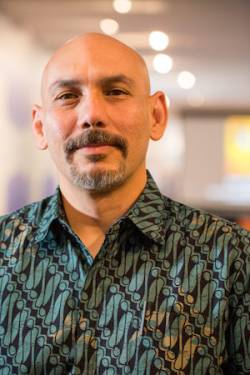 "We have our co-housing community for now (four families), and have expanded our germpod to include elderly parents who have maintained distancing practices through the pandemic. We have had physical distanced activities with kids (mostly built around stuff like biking) and some folks have had outdoor distanced visits in our driveway and walks. The next phase will probably be shared activities for kids, depending on what the plan for Oakland schools ends up looking like." — Innosanto Nagara, Oakland, CA
"We have our co-housing community for now (four families), and have expanded our germpod to include elderly parents who have maintained distancing practices through the pandemic. We have had physical distanced activities with kids (mostly built around stuff like biking) and some folks have had outdoor distanced visits in our driveway and walks. The next phase will probably be shared activities for kids, depending on what the plan for Oakland schools ends up looking like." — Innosanto Nagara, Oakland, CA
COVID-19 doesn’t affect everyone equally. We can’t simply consider our own risk tolerance when we decide to take a risk. The ease of COVID-19 transmission, the possibility that people become contagious as many as two days before symptoms set in, and the likelihood of infecting anyone with whom we share sustained indoor space (remember, exposure over time!) mean that we can’t just take our own risk tolerance into account. We should also act on the risk tolerance of those we would most likely infect were we to become ill.
Everyone is at risk from COVID-19; anyone can be killed or damaged by the disease. However, the impact rises dramatically as we go up the age ladder. If you’re under 30, your chance of dying is very small. But roughly one in ten people over the age of 70 who contracted the disease have died from it, at this writing. COVID-19 can be devastating to people with pre-existing conditions such as diabetes and heart disease.
Everyone in the pod needs to understand the vulnerability of its members. This isn’t simply a medical question. Feelings matter as well. Disease and isolation make some people extremely anxious; they may need a higher level of assurance. If you don’t feel emotionally able to provide that assurance, then you may not be their ideal pod mate.
That’s why it’s important to disclose both medical and emotional information. When you’re in a pod with someone, you become responsible for both their physical and mental health. You are, in effect, family—and with family comes responsibilities and obligations. The larger the family, the higher the risk, and the greater and more complex those responsibilities become. People with low risk tolerance won’t be comfortable in larger pods. They definitely won’t mix well with people who have a higher risk profile.
Does everyone have the information they need for informed consent?
Of course, these conversations don’t inherently eliminate risk. That’s not the aim. The true goal of these conversations is to allow people to make a maximally informed decision about the risks of participating in an activity. This is really all about consent, another value that’s important in non-monogamous communities.
At its best, consent is an ongoing collaboration between two or more people in constant verbal, physical, and emotional dialogue about what each person needs to willingly, safely, and pleasurably engage in an interaction together. The highest-quality consent practices meet six criteria. Consent must be:
- Affirmative: There is clearly expressed agreement to participate in an activity. We’re looking for the presence of a “yes,” not just the absence of a “no.”
- Competent: All parties have the unimpaired ability, knowledge, judgment, and skill to have the agreed-upon interaction.
- Informed: All parties are able to decide whether to participate in an activity based on a shared and accurate understanding of risk factors, risk tolerances, and other relevant facts. Each party should proactively disclose risk factors.
- Unpressured: A “no” should be immediately accepted without undue persuasion, influence, or intimidation to encourage someone to do something they’ve expressed hesitation about doing. Any coercive tactics (e.g., threats, leveraging a power relationship) or pressure (e.g., emotional manipulation, making someone responsible for your disappointment, or continuing to ask for something after a boundary is stated) are expressly forbidden.
- Specific: All parties are clear about what they are doing together and the boundaries of proposed activities. Where there is a lack of specificity, participants act with heightened caution and attunement.
- Ongoing: Consent must be given throughout the interaction, and it can be revoked at any time. Pod mates should check in frequently, and especially when anything changes about the interaction, such as introduction of new people or activities.
All of these principles apply to managing risks in the pandemic. This framework, borrowed from San Francisco Sex Information, takes consent out of a simple binary framework. In allowing us to judge the consensuality of any interaction on a spectrum, we are thus invited to constantly strive for higher-quality consent. We have risk management conversations because consent must be informed. With sufficient information, people can then negotiate the range of activities they would like to participate in that fall within their risk tolerance.
What does this mean in the specific context of COVID-19? It means that if you are exposed, or suspect you may have been exposed, to the disease—through a relative or child, through a chance encounter at the grocery store, or a moment of carelessness on the bus—then you owe it to your pod to let them know about it well before they risk an exposure through you. It means knowing each other’s test results. It means not pressuring someone to stay in the pod (or go along with an activity) when their risk tolerance is exceeded and they need to draw a boundary.
What are your pod agreements?
So, how do you build a pod with all of the preceding information and concerns built into its bones? It starts with getting clear about what behaviors the pod members are expected to undertake to manage exposure risk together. Items to address could include:
- Timebound or rolling: Is your pod an ongoing family structure that you’ll count on into the future? Is it designed to be a temporary arrangement? Are breaks from one another built in?
- Permission-based or reporting-based strategies: A “reporting-based strategy” means that podmates expect to have the freedom to do what they want so long as they report any behavior or circumstances that fall outside of agreements. “Permission-based” strategies ask that podmates clear any not-agreed-upon risky behavior with the rest of the pod before engaging in it. Both can be useful strategies in different situations, and can be used side by side.
- Social-risk management protocols: Are social visits outside of the pod limited to outdoors only or are indoors meetups OK? If indoor meetups are OK, under what circumstances are they allowed? Should folks remain at six-foot distance? Under what circumstances are masks necessary? Are there criteria that would allow non-distanced social contact with people outside of the pod? If so, how frequently is such contact allowed? It’s important to get clear on these because people with different risk tolerances or levels of information may have very different answers.
- Environmental-risk management protocols: What kinds of environments are OK to be in? Is a crowded beach OK? What about supermarkets or similar indoor retail shopping spaces that don’t require masks? What happens if someone coughs on you, or sneezes in a small space with poor ventilation, or other direct exposures to people exhibiting COVID-19 symptoms? Will standards of behavior be tightened or loosened based on epidemiological data such as your community’s infection rate, testing rate, or hospitalization rate? This information can often be found on state or county health department websites or in local news sources.
- Testing protocols: Does the pod want to use testing to manage risk? Should it be regular or situational? How frequently should tests be taken, and by whom? What kinds of tests should be taken?
- Re-entry protocols: If a pod member acts outside of pod agreements or must take a break from the pod for any reason, what’s the pathway to re-enter the pod? Does it require testing? A two-week quarantine period? Are there circumstances under which the pod arrangement would simply end? Should the pod’s terms be renegotiated in this space?
- Conflict management: Let’s face it—even the closest of friendships can be strained in such vexing circumstances as a global pandemic. It could be helpful to consider each pod member’s needs and preferences in dealing with conflict. Agreeing on support for managing conflict—mediators, therapists, or even friends—could help extend your pod relationships.
All this sounds hard, doesn’t it? It is hard. These are hard times, but the challenges we’re facing can be navigated. If we want to protect ourselves and each other, we need to be more intentional, more deliberate, more mindful, more informed than we need to be in ordinary times.
How do you respond to a podmate who breaks agreements?
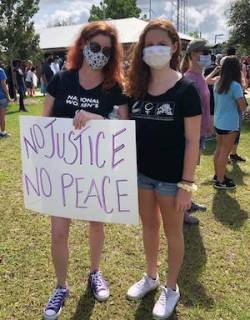 "I have two friends I see frequently without masks, though we will be changing our practices now that infections are skyrocketing in Florida. I also have two other friends that I do distanced backyard happy hours with, and a sex partner. I also have two teens who quarantined at first but now each have two small groups of friends." — Elizabeth Mann, Gainesville, Florida (pictured with daughter)
"I have two friends I see frequently without masks, though we will be changing our practices now that infections are skyrocketing in Florida. I also have two other friends that I do distanced backyard happy hours with, and a sex partner. I also have two teens who quarantined at first but now each have two small groups of friends." — Elizabeth Mann, Gainesville, Florida (pictured with daughter)
In his podcasts and columns, sex and relationship guru Dan Savage spends a fair amount of time discussing ways to avoid exposure to STIs. According to Savage, it’s important for each person in a relationship to feel safe coming to their partner and telling them that exposure may have occurred—that there was outside sexual contact and a condom slipped, for example, or even that there was complete failure to practice safer sex.
Savage’s reasoning for this is not that people shouldn’t be held accountable for breaking agreements, but rather that a person who isn’t afraid that their spouse will automatically leave them due to a slip-up is much more likely to confess it, so that everyone involved can get tested and change their sexual practices to safer ones until the dust settles.
Similarly, if members of a pandemic pod know that they won’t automatically be shamed or get kicked out, they’re much more likely to admit that they ended up kissing the person they were supposed to be on a socially-distant date with, or that they couldn’t resist attending a large, indoor social gathering. That doesn’t mean that the other members of the pod shouldn’t react to these behaviors; but as a matter of harm reduction, infractions should be handled in as matter-of-fact and non-punitive a way as possible—at least, as long as they aren’t regular occurrences.
This is why members should agree in advance on a path back to the pod. So, for example, an isolated lapse might require a test and a two-week isolation period before the member can be welcomed back. There may also need to be some conversation about honesty and trust, possibly mediated through a screen by a therapist.
The important thing is that you’ve discussed these options as you form the pod. You can’t assume that everyone will be perfect; you need to become comfortable with the fact that over the course of the pandemic, your family, friends, and lovers will sometimes break agreements, mistakenly or intentionally. These needn’t be fatal to the relationship. Handled well, mistakes can strengthen your pod.
Who is being left out? How can you soften the blow?
Bringing people in is only part of the equation. When you draw a circle around a group, people are excluded—and that means someone will feel hurt. There’s a reason why punishments like exile and solitary confinement are, historically speaking, some of the very worst a human can endure—we need connection for our very survival. Especially in situations that activate the fear of death—like a pandemic—feeling alone is a terrifying prospect.
What’s the solution? Empathy, kindness, and conversation. You can also soften the blow of being excluded by proactively discussing how you will keep the relationship going. For example, perhaps you can make a special effort to visit the person outside of the pod in their backyard, or go on walks. You and your podmates might be willing to share indoor space with them so long as masks stay on. You can also help friends and family to form their own pods.
There’s a bigger picture here: Pods are a way of keeping society going in a pandemic—and, in fact, there’s no such thing as a completely isolated pod. Like individual humans, pods cannot be islands. Every pod will touch another; they will together form a Venn diagram. The point of contact could be an ex-spouse who sees your kids on the weekend. It could be coworkers. The boyfriend you see once a week in your apartment might have roommates with their own lovers. Your child might have a friend who lives with both parents and grandma; though you maintain distance or barriers with them, you’re still part of the same chain of infection.
Remember: The point of a pod is to manage and mitigate, not eliminate, risk, while making a sustainable life in the years of pandemic that we are facing. In most circumstances, you’re not going to be able to completely seal yourselves off from the outside world—and that’s not necessarily a bad thing. “The good family teaches its members to reach out and form bonds with others,” says historian Stephanie Coontz. “The healthiest families are those families that don’t try to be everything and do everything.”
Similarly, a pod shouldn’t merely be a container for its members, but a facilitator of social connection and help for people outside of the pod. In the face of sickness and death, we need each other. It’s not isolation that will save us—but rather compassion, communication, and cooperation.








Comments